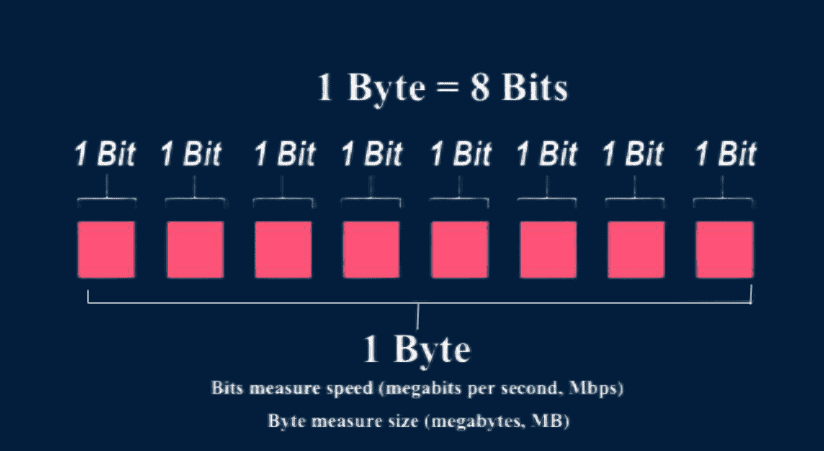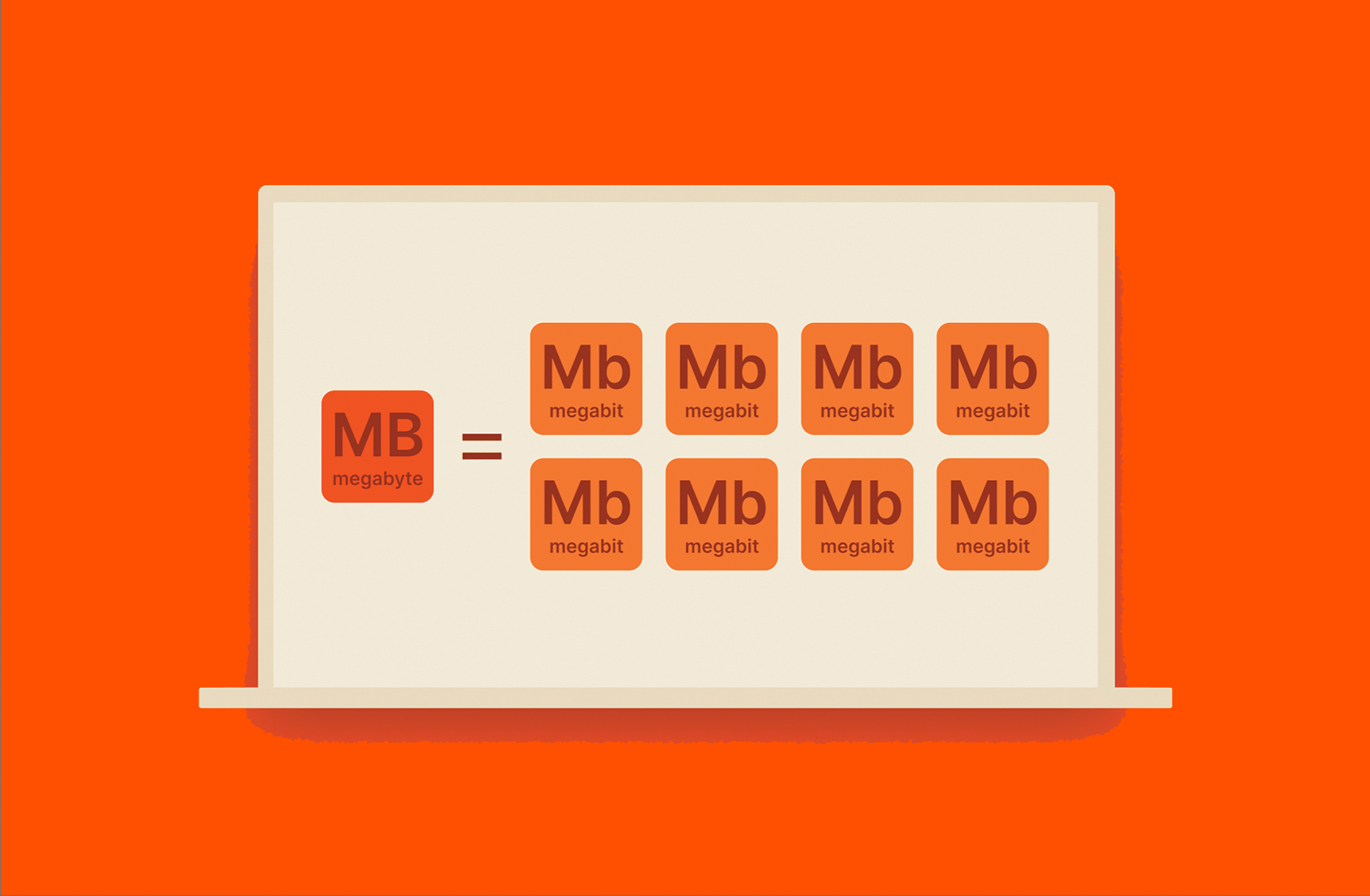Demystifying Megabits Per Second: What Customers Required to Know
Demystifying Megabits Per Second: What Customers Required to Know
Blog Article
Just How Megabits Per Second Influence Your Online Tasks
The idea of megabits per second (Mbps) plays an essential role in forming our on the internet experiences. Greater Mbps can improve performance and minimize disruptions, while poor speeds may promote disappointment and inadequacy.
Comprehending Megabits Per Second
When thinking about internet speed, it's essential to comprehend the concept of megabits per second (Mbps), which works as a common dimension for data transfer prices. This metric evaluates just how much information can be sent over a web link in one second, offering a clear understanding of efficiency capabilities - Megabits Per Second. For context, one megabit is equivalent to one million little bits, and Mbps is typically utilized to share data transfer for numerous online activities
A greater Mbps shows a faster internet connection, making it possible for users to carry out jobs such as downloading data, searching sites, and involving in on-line gaming much more effectively. As an example, regular browsing calls for around 1-5 Mbps, while streaming high-def video might demand 5-25 Mbps. Recognizing these needs is essential for establishing the ideal net rate required for specific activities.
Additionally, the number of devices connected to a network can impact overall performance. Multiple users streaming, video gaming, or downloading and install all at once can stress readily available bandwidth, resulting in slower speeds - Megabits Per Second. Evaluating personal online behaviors and needs is essential in picking a net strategy that lines up with one's requirements, guaranteeing a seamless digital experience
Streaming and Buffering Issues
Streaming high-definition content has actually come to be a staple of modern-day on the internet home entertainment, yet it is typically gone along with by annoying buffering issues. These disturbances can dramatically interfere with the checking out experience, causing dissatisfaction and potential loss of audience involvement. Buffering happens when the data sent from the streaming solution is not received promptly sufficient to preserve a smooth playback, often due to not enough web speed gauged in megabits per second (Mbps)

In addition, real-time streaming can be influenced by network blockage, which happens when several devices share the same transmission capacity. Maximizing connection rate and guaranteeing adequate Mbps is necessary for a seamless streaming experience. As streaming solutions remain to evolve, understanding the effect of Mbps on buffering problems continues to be important for consumers looking for undisturbed home entertainment.
Online Pc Gaming Performance
The impact of web speed on on-line activities prolongs beyond streaming, dramatically influencing on-line video gaming efficiency. In competitive pc gaming, low latency and high transmission capacity are essential for a smooth experience. A fast link minimizes lag, enabling players to react promptly to in-game events, which can be the distinction between success and loss.
Data transfer, gauged in megabits per second (Mbps), plays a crucial role in supporting numerous devices and video gaming systems concurrently. Insufficient data transfer can bring about dropped connections or lowered game high quality, adversely affecting gameplay. On the internet multiplayer video games require substantial data transfer, especially throughout peak pc gaming hours when numerous players are online.
Fast-paced first-person shooters require greater speeds to maintain responsiveness, while turn-based strategy video games might work reasonably well on reduced rates. As on the internet video gaming continues to advance, with boosting graphical integrity and even more complex multiplayer environments, the need for greater Mbps will only intensify.
Video Clip Conferencing High Quality
In today's digital landscape, video clip conferencing high quality is heavily affected by web speed, specifically in terms of bandwidth and latency. Top quality video clip calls need sufficient transmission capacity to transfer sound and video clip data perfectly. Typically, a minimum of 1.5 Mbps upload and download speeds is advised for conventional meaning video clip, while high-definition video conferencing usually demands at least 3 Mbps.
Latency, or the helpful site hold-up between sending out and getting data, also plays a vital function in the individual experience. Reduced latency guarantees that discussions flow normally without awkward stops briefly or interruptions. Ideally, latency needs to be below 150 nanoseconds for effective interaction. Greater latency can result in resemble, lag, and disjointed interactions, which can impede cooperation and engagement during meetings.
Additionally, multiple individuals in a video seminar can strain available bandwidth, necessitating also greater rates. Network blockage, often triggered by simultaneous tasks like go now streaming or downloading, can further break down video top quality. Hence, for companies counting on video clip conferencing for remote collaboration, comprehending the connection between megabits per general and second communication high quality is necessary for preserving efficiency and boosting digital communications.
Choosing the Right Net Plan
Picking a suitable web strategy is critical for making sure optimal performance in numerous on the internet activities, especially in setups that demand high transmission capacity, such as video conferencing and online pc gaming. Megabits Per Second. When considering an internet plan, it is necessary to examine both the speed and information allocation to match your certain use demands
For houses with multiple users involving in simultaneous activities, a strategy offering greater megabits per second (Mbps) is advised. Commonly, a minimum of 25 Mbps is appropriate for common streaming and surfing, while plans exceeding 100 Mbps are more suitable for even more intensive jobs. In addition, think about the nature of your online activities; click here for more video clip conferencing calls for at least 1.5 Mbps upload rate, while on-line gaming may need a lower latency yet constant link.
Limitless data strategies can prevent strangling and disturbances, particularly if hefty use is expected. By thoughtfully picking a web plan tailored to your demands, you can enhance your on the internet experience, guaranteeing smooth, nonstop accessibility to your preferred activities.
Verdict
In conclusion, the value of megabits per second (Mbps) in forming on the internet tasks can not be overemphasized. Greater Mbps assists in seamless streaming, lowers buffering, improves pc gaming experiences, and makes sure high-quality video conferencing. On the other hand, inadequate data transfer can result in irritating disturbances and diminished performance across numerous jobs. Consequently, a complete understanding of individual or family Mbps demands is vital for selecting a proper net plan that effectively sustains diverse online tasks and individual demands.

Typically, a minimum of 25 Mbps is ideal for conventional streaming and browsing, while plans exceeding 100 Mbps are better for even more extensive tasks. Furthermore, consider the nature of your online tasks; video conferencing calls for at least 1.5 Mbps upload rate, while on the internet gaming might require a lower latency but regular connection.
Report this page